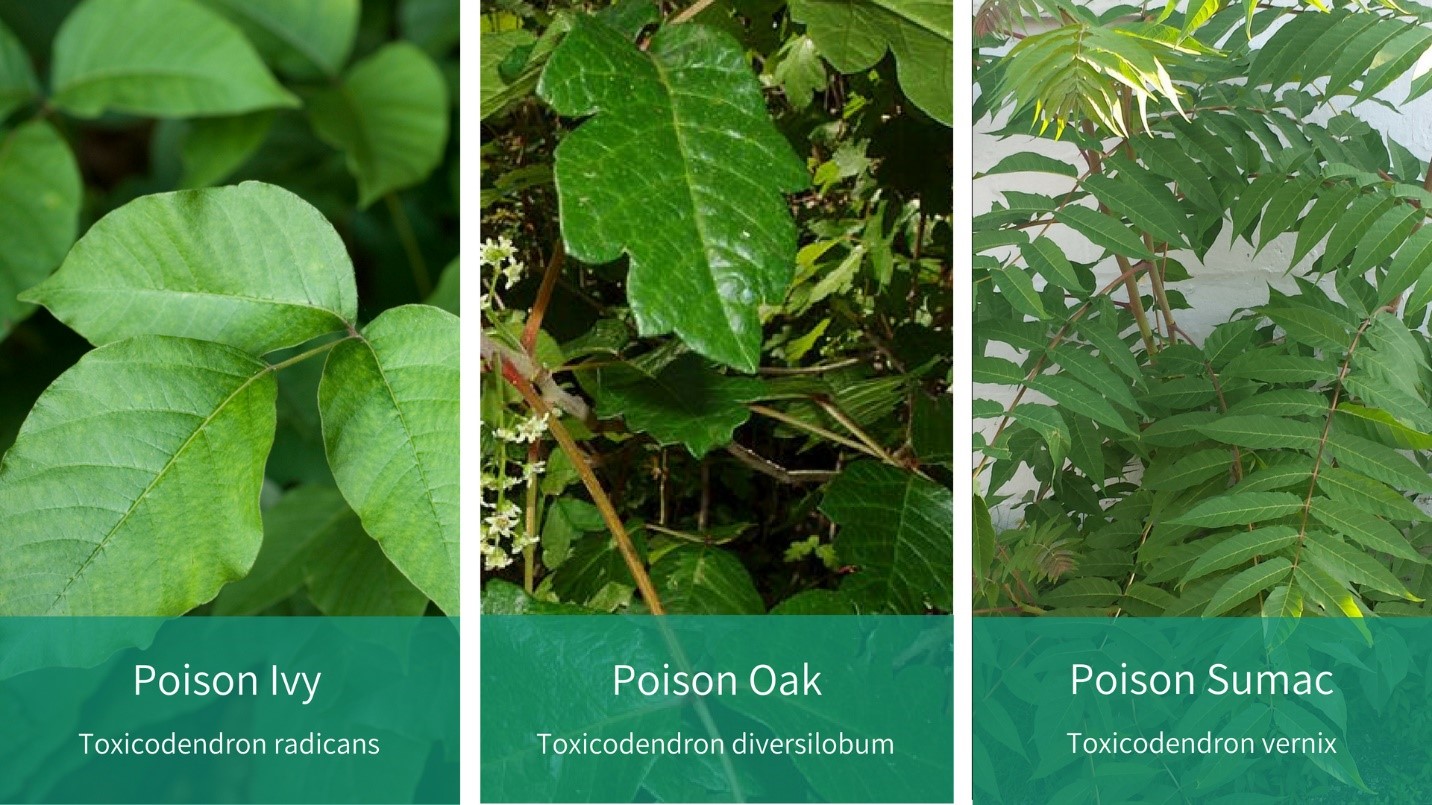
June 24, 2021
Poison ivy, poison oak, and poison sumac are three of the most common irritants North America and affects as many as 50 million Americans each year. These plants secrete oily chemicals that can cause redness, swelling, and itching if your skin contacts them.
How Can You Identify Each One?
These plants contain urushiol, which is a poisonous compound of oils. Nearly everyone is allergic to this substance, resulting in the characteristic rash and itchiness that develops.
A good rule of thumb is to remember the famous saying, “Leaflets of three, let it be.” Poison ivy is far more common and its leaves are compound leaves, meaning each leaf is composed of three leaflets. In each set of leaflets, the middle leaflet has a longer stem than the two side leaflets. Often, a poison ivy leaf has a reddish stem, and the leaflets follow a distinctive, alternating pattern. Be sure and check the vine. Thick, hairy vines are a hallmark of poison ivy plants. Finally, look for berries. Poison ivy vines will sprout small, opaque, white or yellowish berries that look like tiny pumpkins.
Poison ivy – This vine is found on the ground, climbing on trees, fences, and walls, and can also be found in small shrubs. Poison ivy always comes with three leaves and never has thorns or sharp or scalloped edges.
Poison oak – Poison oak is not as common as poison ivy in Oklahoma. However, it is hard to tell the difference between the two and most people use the term ivy and oak interchangeably.
Poison sumac – You may only run into poison sumac if you are traveling south. Poison sumac looks a lot different than poison ivy, as its only form is a small tree. Poison sumac thrives in wetland areas.
How Can You Treat the Irritation?
The itchy rash caused by poison ivy often does not appear until 12 to 72 hours after you’ve been exposed to the oil.
If your rash is minor, here are some tips from the American Academy of Dermatology.
- Wash the affected areas with soapy, lukewarm water.
- Place cool, wet compresses on the affected area for 15 to 30 minutes several times a day.
- Soak in a cool-water bath containing an oatmeal-based bath product such as Aveeno.
- Apply an over-the-counter corticosteroid cream for the first few days.
- Apply calamine lotion.
- Take oral antihistamines, such as diphenhydramine (Benadryl, others), which may also help you sleep better.
- Wash any belongings that might have come into contact with the ivy to prevent further outbreaks.
If you break out into a serious rash or if you experience swelling or painful blistering with a rash, it’s best to visit your health care provider right away. A doctor may offer topical steroid creams to reduce redness and swelling, and they may prescribe oral antibiotics if the rash develops an infection.
If you’ve had a brush with poison ivy, oak, or sumac, our team of medical team will help you recover from the symptoms and minimize complications from these painful irritants. We proudly serve patients throughout Central Texas, with family medicine clinics in Gatesville, Goldthwaite, and Moody. Call us at (254) 865-2166 to schedule an appointment, and visit our website to learn more about our treatment options.
 Skip to content
Skip to content
